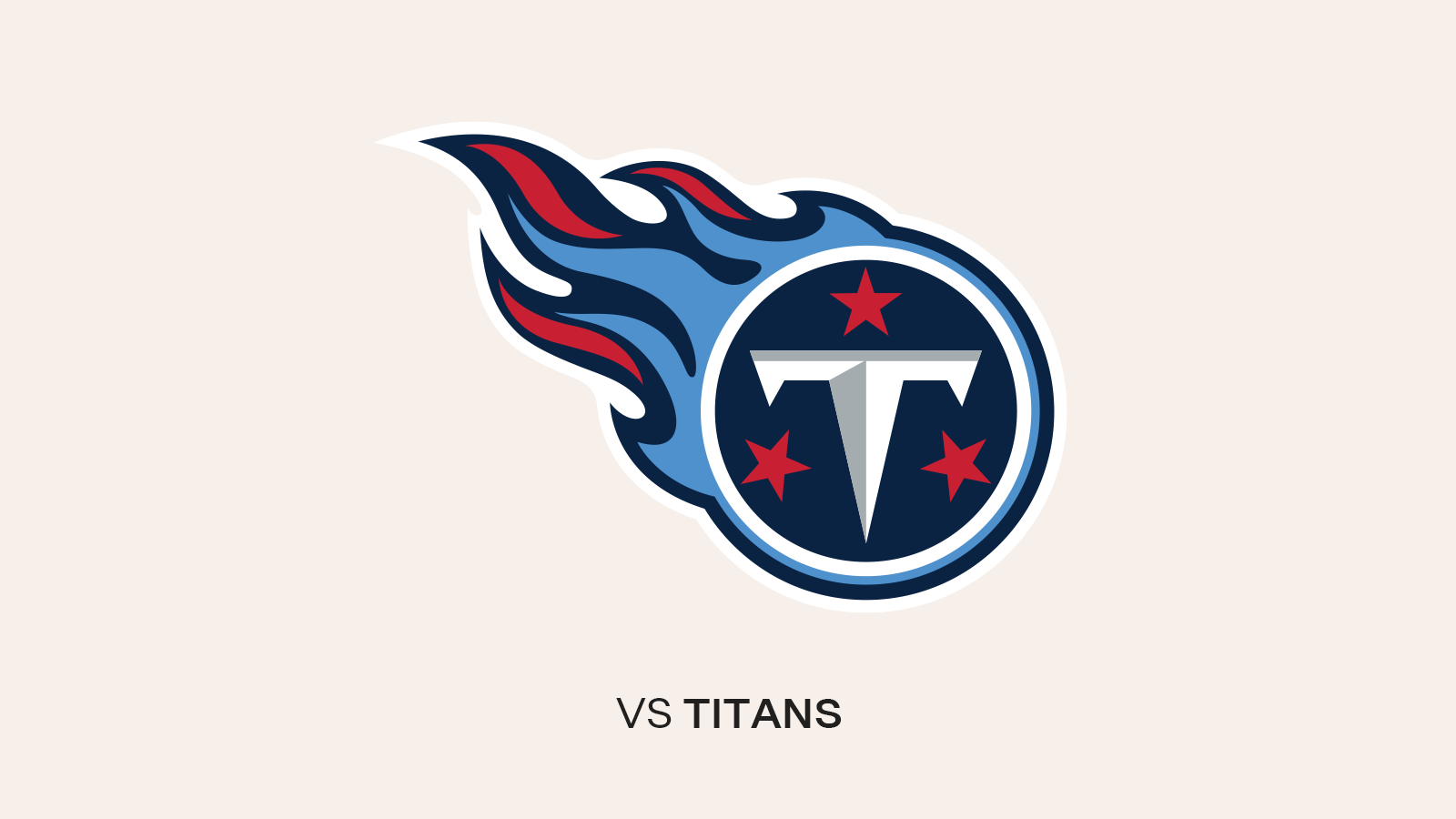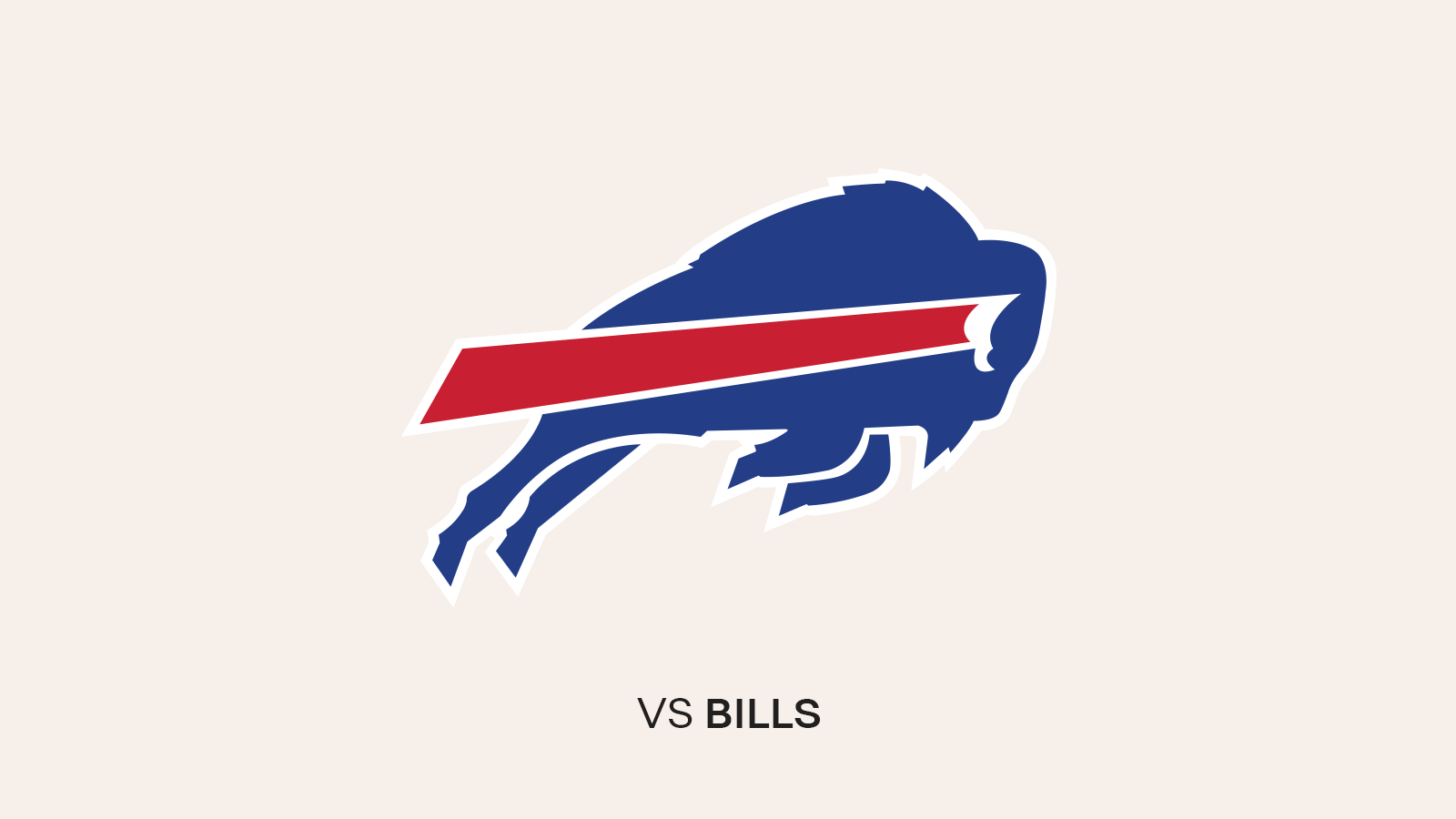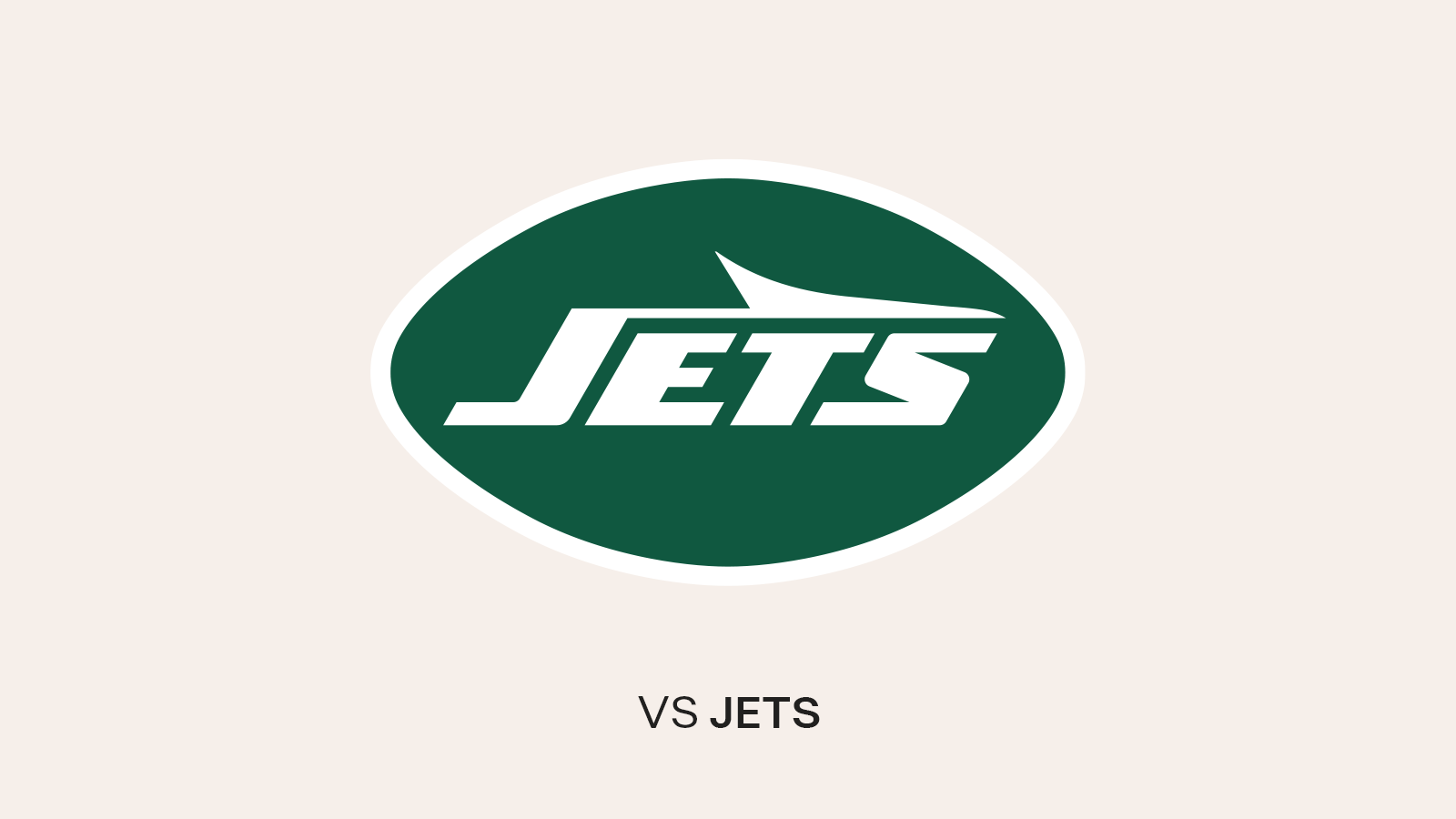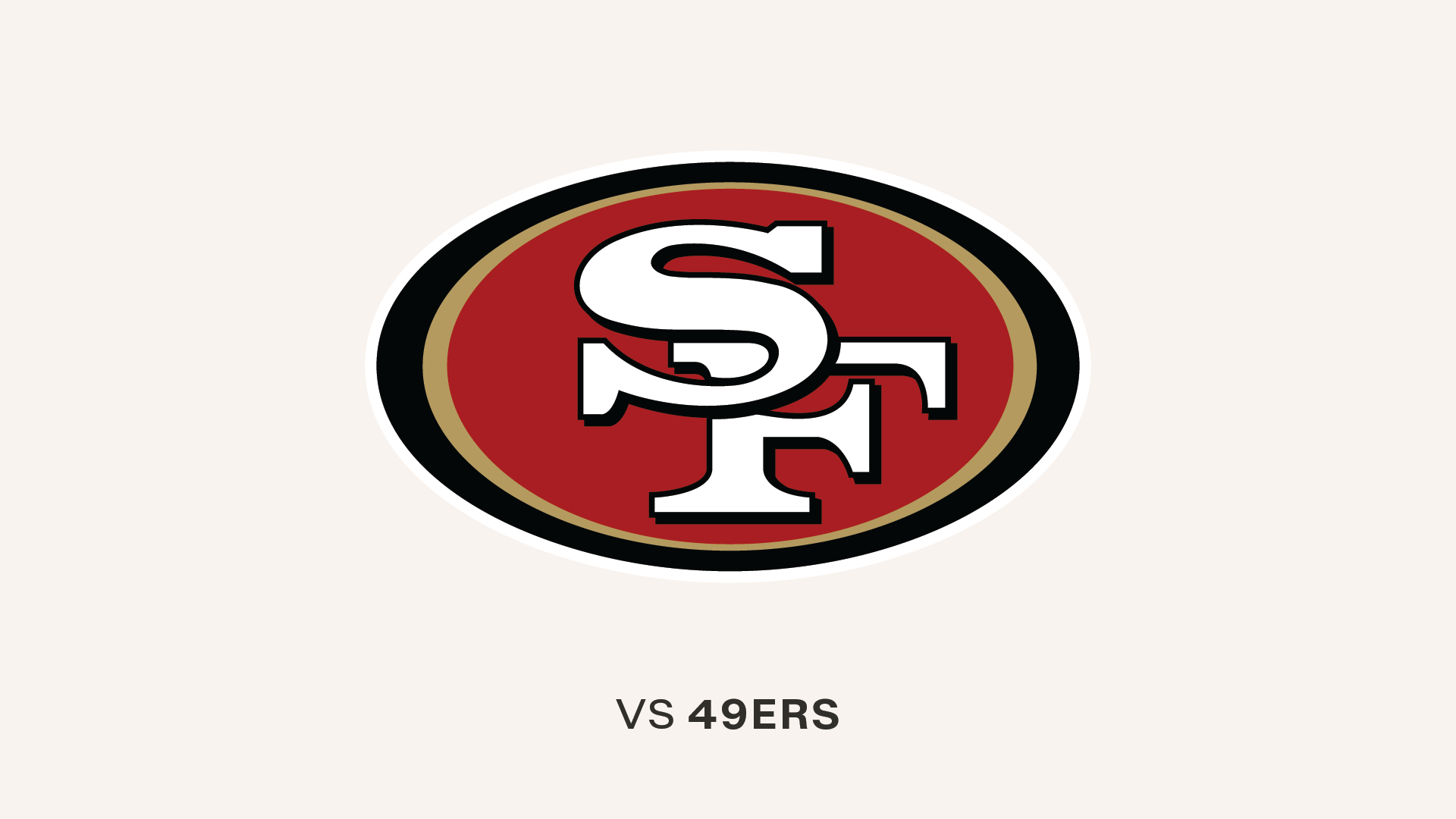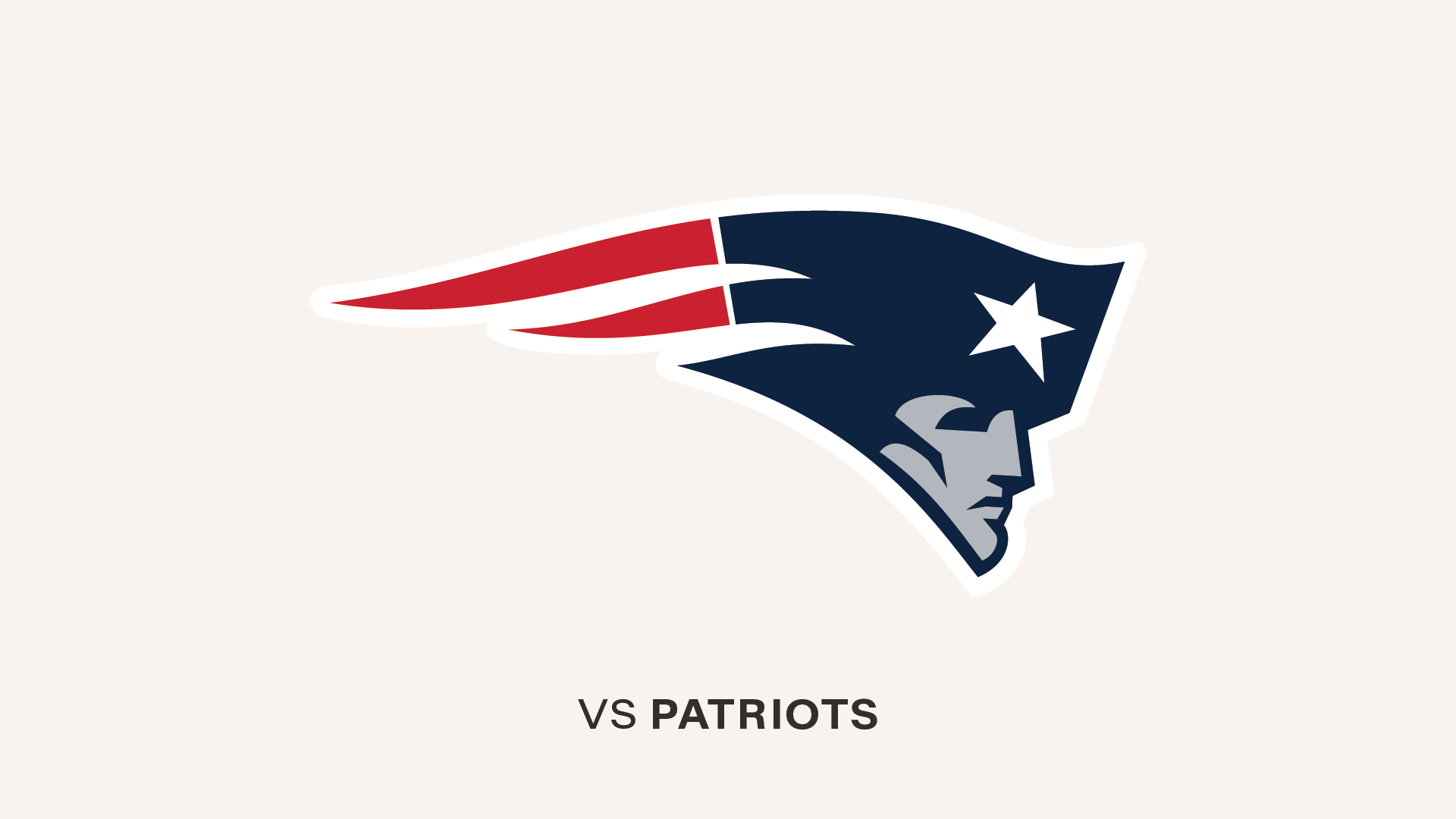Well, the draft was fun, wasn't it?
The Answer Man loves the draft, partly because it's a never-ending font of trivia, which is pretty much what makes my world go around. But the process itself is a blast, too, especially when your team is working it as hard as the Buccaneers did this year, moving up and down to get in position for the guys they wanted.
Now, the Answer Man didn't get to go up to New York with that lucky crew, and I didn't have a specific job during draft weekend, so I spent those three days trying to get a peek into the high-security draft room here at One Buc Place. That thing was locked down, however, and invite only. Apparently, no one in upper management saw the need for a guy in the draft room who could quickly tell you who has the highest per-catch yardage average in Bucs history (John Lynch, by the way) or the team against which Tampa Bay has its all-time best points differential (Atlanta).
So I was just a fan that weekend, like the rest of you. That's okay. It was fun. And I'll have to settle for some after-the-fact analysis of the event. You know, trivia, my raison d'etre. So before we get to your questions, here's some did-you-know minutiae about the Bucs' 2012 draft efforts.
- Once running back Doug Martin, the team's second first-round pick, suits up for his first regular-season game, he will become just the second Boise State product ever to play for the Buccaneers. The first was a safety named Rick Woods who played (and started) exactly five games during the 1987 strike season…but not the replacement games. Martin is the first player the Bucs have ever drafted out of Boise State.
- As was widely noted on Day One of the draft, Alabama's Mark Barron became the first safety the Buccaneers had ever drafted in the opening round when he was selected seventh overall. That came four years after the Bucs made Aqib Talib just the second first-round cornerback in team history, and the highest drafted one overall at #20. So, now that the secondary is fully represented, what's left? Well, actually the Buccaneers have now spent at least one first-round pick on almost every position you would expect: quarterback (four times), running back (5), wide receiver (2), offensive tackle (3), offensive guard/center (3), defensive tackle (4), defensive end (6), linebacker (4), cornerback (2) and safety (1). Though there have been a handful of placekickers and one punter taken in the first round in NFL history, it's not particularly realistic to expect the Bucs to hit those positions. I suppose you could split hairs and say fullback is a separate position from running back, but I'm happy to keep them combined. Which, realistically, leaves just one primary position the Bucs have never targeted in the first round: Tight end.
- It wasn't surprising that Tampa Bay skipped the defensive line in this year's draft, as the team had committed four first and second-round picks to that crew in the 2010 and 2011 drafts combined (Gerald McCoy, Brian Price, Adrian Clayborn and Da'Quan Bowers). Still, a completely D-Line-free draft is something of a rarity for the Buccaneers. The last one before 2012 occurred in 2004, and before that it was 2000, which was just a five-person class. Overall, the Bucs have participated in 37 drafts and only five of them failed to include even a single down lineman – the aforementioned three plus 1994 and 1978. Admittedly, the draft before 1993 was roughly 467 rounds long, so there were a lot of positions hit on draft weekend those years. The Bucs actually only drafted eight players in 1978, but that's because they traded six of their picks for veteran players, including one defensive lineman, Ernie Holmes.
- When the Bucs traded back two spots before selecting Barron, they ended up in a spot they've actually drafted from twice before, seventh overall. That pick was used quite successfully on linebacker Hugh Green in 1981 and a little less so on Charles McRae one decade later. Eventually, the Bucs would draft from the following seven overall spots: 7, 31, 58, 140, 174, 212 and 233. Surprisingly, the only one of those that had never before been used by the Buccaneers, in 37 years of drafting, was #31, the pick that produced running back Doug Martin. The Bucs have picked in all of those other spots in the past before; strangely, this is the fifth time they have picked 233rd overall. In fact, that pick produced wide receiver Sammie Stroughter just three years ago, and he's still going strong. Hopefully the same will be true of this year's #233, tight end Drake Dunsmore, three years from now (and more).
- All seven of the Buccaneers' 2012 draftees finished their college careers in bowl games, as they were plucked off a list of very successful teams that went a combined 71-20 last year (counting West Virginia twice). Mark Barron's Alabama team beat LSU in the BCS Championship Game, 21-0; Doug Martin's Boise State squad beat down Arizona State, 56-24, in the Las Vegas Bowl; Lavonte David's Nebraska team lost to South Carolina in the Capitol One Bowl, 30-13; Najee Goode and Keith Tandy helped West Virginia demolish Clemson, 70-33, in the Orange Bowl; Michael Smith's Utah State team got nipped, 24-23, by Ohio in the Famous Idaho Potato Bowl; and Drake Dunsmore's Northwestern crew was handed a 33-22 loss by Texas A&M in the Meineke Car Care Bowl.
Okay, does any of that actually mean anything? I guess not. But the Answer Man finds it interesting, which means you've either got to bear with me and try to feel the same way, or scroll down past the intro to the part where I start answering your questions instead of my own.
Which is now!
(By the way, click here to go to my question submission page if a topic strikes you while you're reading what follows.)
**
- Ryan Nielsen of Jacksonville, Florida asks:
I was wondering if the Bucs perform better at night or in the day. I can think of a lot of potential ways to specify the question, each requiring deeper digging, so I will leave it to you to decide how deep you want to go with it.
Answer Man: Actually, Ryan, I think there's only one real determinant of whether the Bucs are better during the day or at night: Win-loss record. That's all that really matters, right?
Two things I think we need to be clear about up front:
1) There is such a huge difference in the two sample sizes here that I'm not sure any conclusion is going to be too solid. For example, the Seattle Seahawks are 16-8 all-time in Monday Night Football games, an impressive .667 winning percentage that is actually the best in the entire NFL on MNF. In all of their other regular-season games since they came into existence (as the Bucs' sister expansion team) in 1976, the Seahawks are 263-287, for a winning percentage of .469. The 'Hawks deserve kudos for their good work in prime time, but I think you'd be stretching it to say playing on MNF in future games would automatically make them 42% more likely to win.
2) Obviously, contests that start at 1:00 p.m. are day games and ones that start at 8:00 p.m. are night games. Maybe this is also obvious, but we're going to have to put all 4:00 p.m. games into the day category. I only bring that up because these games sometimes end in darkness. There's no way I'm breaking down individual 4:00 p.m. games to see if the Bucs got better or worse as the sun went down.
With that in mind, this really isn't too difficult to quantify. The Buccaneers have played 44 regular-season night games, not all of which were nationally-televised affairs. Little-known fact, unless you've been a Bucs fan for a really long time: In the early years, the Bucs sometimes played home games on Saturday night to avoid the Sunday afternoon heat. The networks didn't really mind losing one game off their Sunday slate back then, so the Bucs played a handful of September games on Saturday night from 1977-81. That would obviously not fly nowadays.
The Bucs' record in those night games? 19-25. That's a winning percentage of 43.2%.
That leaves 520 other regular-season games that kicked off during daylight. The Bucs' record in those games is 203-316-1. That's a winning percentage of 39.1%.
Therefore, it appears as if the Buccaneers are – or, more to the point, have been – a bit better when playing at night.
There's more to this story, though, as there almost always is in one of my answers, right? The Answer Man likes to give you a little bit extra whenever possible, even if I'm not sure you actually want it. I've got a reputation for verbosity to uphold.
Here's what I mean: If you look at when, and more importantly why the Buccaneers are on the national prime-time stage, you might find a reason the team has fared better under the lights throughout its 36-season history. You see, a team more likely to lose is a team less likely to be playing at night in the first place.
I think you know what I mean. Let's look specifically at the 20 times the Buccaneers have been on the Monday Night Football schedule, including two games that were actually played on Saturday night around the holidays. Here are the seasons in which those games occurred: 1980, 1982, 1983, 1998 (twice), 1999, 2000 (twice), 2001 (twice), 2002 (twice), 2003 (three times), 2004, 2006, 2008, 2011 (twice). Notice a pattern there? Most of those years came immediately after a playoff season for Tampa Bay. The exceptions are 1999 (the Bucs had just missed the playoffs in 1998 but were still clearly a team on the rise), 2004 (just a year removed from the Super Bowl win) and 2011 (the Bucs were 10-6 in 2010 and just missed the playoffs on a tiebreaker).
So, it stands to reason that the majority of the Buccaneers' prime-time games occurred in seasons in which the team was quite good. It didn't always work out that way – the 2004 and 2006 seasons certainly went nothing like anyone expected. But for the most part, the Bucs that got to play at night were on better teams than the Bucs who didn't. Tampa Bay didn't play a single Monday night game from 1984-97, and only the last of those 14 years was a winning campaign. There were a few Sunday and Thursday-nighters tossed in there, but not enough to tip the balance.
By the way, here are the Bucs' records in prime-time on the various possible evenings:
Sunday: 6-11
Monday: 9-9*
Thursday: 1-1
Saturday: 3-4**
- That doesn't include two Saturday night games that were basically MNF broadcasts
- This includes the five non-national games from the 1977-81 period.
**
- James of Crewe, United Kingdom:
Hello Answer Man! Hope you have been well and I apologise if I have been recently remiss in asking you to delve into your super hero knowledge. However I hope this lifts your dysphoria...We Bucs fans know how our 2010 7th-round compensatory pick played out (Mr. Erik "Russell Crowe" Lorig). But out of the 587 comp draft picks, how many have gone onto have really good careers? Pro bowls being the marker of success (like that's not flawed lol). Adios until next time.
Answer Man: Um, hi James. I…missed you? Sorry, I don't really recall our last interaction, but if it was as sadistic as this one, I probably blocked it out. You just want me to review ALL 587 compensatory picks ever, huh? (Nice job getting that number right, by the way.) Nineteen years and nearly 600 players worth of research on the fabulously scintillating topic of compensatory picks? Sure, no biggie.
Before I do that…Erik "Russell Crowe" Lorig? Am I missing something there. I can't say I've heard that one before. Please write back and let me know where that comes from so I can see if it's worth sharing with everyone else.
Oh, and also, "dysphoria?" Had to look that one up. For anyone else out there in the same boat, it means "a state of dissatisfaction, anxiety, restlessness or fidgeting." I like that; have to remember that one.
Okay, obviously those two asides were a stall tactic because I really don't want to dive into this one…but here goes. Let me tell you, James, finding the information on which picks were compensatory during the drafts in the 1990s (comp picks started in 1994) was NOT easy. I hope you appreciate this.
Of the 587 players who have been drafted using compensatory picks over the last 19 years, 19 have gone on to appear in at least one Pro Bowl. Obviously, that cannot and does not include any of the 32 players who were just taken with comp picks last month, as they haven't played yet. In addition, none of the players chosen with comp picks in the previous four drafts (2008-11) have yet to make the Pro Bowl, though that can still happen, of course.
Probably the most famous names on the list of comp-picks-turned-Pro-Bowlers are quarterback Tom Brady, QB Matt Hasselbeck, S Brian Dawkins, DT La'Roi Glover and WR Hines Ward. Here's the full list, presented in alphabetical order. In parentheses are the teams that drafted them and the rounds and years in which they were drafted:
QB Derek Anderson (Baltimore, 6th, 2005)…1 Pro Bowl
S Yeremiah Bell (Miami, 6th, 2003)…1 Pro Bowl
P Mitch Berger (Philadelphia, 6th, 1994)…2 Pro Bowls
S Antoine Bethea (Indianapolis, 6th, 2006)…2 Pro Bowls
P Josh Bidwell (Green Bay, 4th, 1999)…1 Pro Bowl
QB Tom Brady (New England, 6th, 2000)…7 Pro Bowls
S Brian Dawkins (Philadelphia, 2nd, 1996)…9 Pro Bowls
La'Roi Glover (Oakland, 5th, 1996)…6 Pro Bowls
QB Matt Hasselbeck (Green Bay, 6th, 1998)…3 Pro Bowls
RB Travis Jervey (Green Bay, 5th, 1995)…1 Pro Bowl
FB Le'Ron McClain (Baltimore, 4th, 2007)…2 Pro Bowls
WR Sean Morey (New England, 7th, 1999)…1 Pro Bowl
FB Ovie Mughelli (Baltimore, 4th, 2003)…1 Pro Bowl
G Marco Rivera (Green Bay, 6th, 1996)…3 Pro Bowls
G Tim Ruddy (Miami, 2nd, 1994)…1 Pro Bowl
WR David Tyree (N.Y. Giants, 6th, 2003)…1 Pro Bowl
LB Mike Vrabel (Pittsburgh, 3rd, 1997)…1 Pro Bowl
WR Hines Ward (Pittsburgh, 3rd, 1998)…4 Pro Bowls
G Scott Wells (Green Bay, 7th, 2004)…1 Pro Bowl
I know what you're thinking – Derek Anderson, David Tyree, Travis Jervey and Sean Morey were all Pro Bowlers? Or, perhaps in Morey's case, who? Anderson, you may recall, had one outstanding season with Cleveland in 2007 and that was enough to get him first-alternate status at QB in the AFC for that year's Pro Bowl. When fellow former comp pick Tom Brady pulled out due to injury, Anderson was in. As for David Tyree (who is much more famous for his helmet catch in Super Bowl XLII), Sean Morey and Travis Jervey, they all made it to the all-star game as special-teamers.
Brady with his seven Pro Bowls is generally considered the greatest comp pick of all time (so far), with Glover (six Pro Bowls) and Ward (four). Brian Dawkins actually has more Pro Bowls than Brady, with nine, but all the Super Bowl titles probably push Brady to #1 and Dawkins to #2. Plus, as an incredibly rare comp pick at the end of the *second *round, he seems like a completely different sort of example. Mitch Berger, Antoine Bethea, Matt Hasselbeck, Le'Ron McClain and Marco Rivera all went to multiple Pro Bowls, as well.
As you hint, James, counting Pro Bowls isn't really the best way to rank players. It was the easiest, however, and perhaps the least subjective. You should know, though, that there have been plenty of other players who came into the league as comp picks and never made it to the Pro Bowl (at least not yet) but would have to be considered solid additions. Here's a handful, in no particular order: Scott Shanle, Floyd Womack, Najeh Davenport, Chester Taylor, Kyle Kosier, Marques Colston, Pierre Garcon, Sam Koch, Ryan Fitzpatrick, Leroy Hill, Mike Vrabel and Domonique Foxworth. The late Pat Tillman gave up his career with the Cardinals in the aftermath of the 9/11 attacks, joined the Army Rangers and fought in Afghanistan, where he was eventually killed in action. He was originally a compensatory pick by Arizona.
Heck, remember when the New York Giants had that great three-headed monster in the backfield of Brandon Jacobs, Derrick Ward and Ahmad Bradshaw, with starting fullback Madison Hedgecock slamming open holes for them? Ward, Bradshaw and Hedgecock were all former compensatory picks.
Why, you could make a pretty darn competent team of NFL players out of former compensatory picks, without even using the Pro Bowlers. Now, that's not terribly surprising, given that some comp picks come as early as the end of the second round, but still, we are talking about a lot of late sixth and seventh-rounders here. How's this team (assume every player in the prime of his career, since these guys came into the league at varying times):
QB: Ryan Fitzpatrick
RB: Chester Taylor
FB: Madison Hedgecock
T: Kyle Kosier
T: Willie Colon
G: Floyd Womack
G: Edwin Mulitalo
C: Dusty Zeigler
TE: Jay Riemersma
WR: Marques Colston
WR: Pierre Garcon
DE: Bobby McCray
DE: Ray McDonald
DT: Jason Fisk
DT: Chad Eaton
LB: Leroy Hill
LB: Landon Johnson
LB: Sam Rogers
CB: William Gay
CB: Domonique Foxworth
S: Thomas DeCoud
S: Marlon McCree
P: Brad Maynard
K: Cole Ford
KR: Chad Morton
LS: Patrick Mannelly
Now, I'm not saying this is the only possible team you could make from this category players, or even the best. I just whipped it up in about 20 minutes, and I'll admit that the defensive line is a little lacking. Still, this is a pretty good indication of how deep the pool of former comp-pick players who made it in the NFL is.
As for the Buccaneers, their best compensatory pick so far is probably still linebacker Alshermond Singleton, nabbed at the end of the fourth round in 1997. Singleton was an outstanding special teams player from Day One in Tampa and an oft-used reserve who graduated to the starting lineup in 2002 just in time to be part of one of the greatest defenses of all time. He then signed with the Dallas Cowboys as a free agent, taking with him a Super Bowl ring.
**
- Griffin from Orlando, Florida asks:
What does the big C on Josh Freeman's jersey mean?
Answer Man: Ah, an easy one to cleanse my mental palette after the research of the last one. Five hundred and 87 players that guy made me look up!
The "C" on Josh Freeman's jersey, as well as the ones you may have seen on the jerseys of Jeff Faine, Ronde Barber, Quincy Black and Adam Hayward last year, means "Captain." Those five were all chosen by a vote of their teammates as the team captains last year, and for the last few years the NFL has been incorporating the C mark on all team's jerseys to recognize these layers. You may also have noticed that the C is accompanied by a run of four stars, which are colored either yellow or white. Each year that a player serves as a captain, up to four, he gets another star in yellow. Ronde Barber's row of stars is all lit up, as you would imagine.
**
- Xavier from Lacey, Washington asks:
Which person on the Buccaneers went to the most Pro Bowls?
Answer Man: Alright, yes, I'm taking a little mental break here in the middle of the column with some no-brainers. I can hear some of you there screaming, "I can answer that one!" Probably true, but I'm the one who gets paid the big bucks to actually do so. BIG bucks. HUGE.
And yes, I know I answered this exact question from this exact person two columns ago. But Xavier sent it in again, which makes me believe he didn't see it. So, since this won't take long, here it is again. The rest of you can skip it, if you like.
Even if you don't know the answer, you probably won't be surprised to read that the player who went to the most Pro Bowls as a Buccaneer is linebacker Derrick Brooks. He did so 11 times in his illustrious career, which makes him one of only 22 players in league history with that many all-star trips. The Pro Bowl started in 1950, by the way. Brooks, Ray Lewis and Junior Seau are the only three linebackers on that list.
Next on the Bucs' list is defensive tackle Warren Sapp, who made the Honolulu trip seven times. Mike Alstott and Lee Roy Selmon are tied for third, with six Pro Bowls each, making Alstott number one in team history among offensive players. Ronde Barber, John Lynch and Hardy Nickerson all got five all-star nods as Buccaneers, but it should be noted that Lynch went four more times as a Denver Bronco and thus has a total of nine.
**
- Carl of Fort Worth, Texas (but he's a Tampa native) asks:
Hello Answerman: I spent my first 32 years in Tampa, having moved to Fort Worth the very year the Bucs went on to win Super Bowl 37 - talk about irony. My question concerned their new to-be defense. I've gathered over the last few years their cover-2 defense lost a lot of its effectiveness due to the front 4's inability to apply enough pressure on the passer, and the lack of effectiveness in the linebackers and secondary. Can you help enlighten how changing to a 4-3 is going to help them. I'm afraid I don't understand the differences between both schemes. Thanks!
Answer Man: Okay, this one's kind of in the middle between the first two questions and the next two above. The answer isn't necessarily simple, but it's not anything that requires hours of research.
The issue here is to determine how technical to get. I have no doubt that there are some fans out there who can describe the philosophies and strengths and weaknesses of schemes such as the Cover Two better than I can, but then there are surely plenty of others who don't really desire a discussion that goes too deep into the Xs and Os.
I'm going to guess that Carl leans more towards the latter, because the construction of the question is a little strange. By that I mean that he seems to be asking me the difference between a Cover Two and a 4-3 defense, and in fact those two things are not opposite sides of a coin, or even mutually exclusive. The Buccaneers, in fact, have been running a 4-3 defense since 1991 and they spent a good portion of the 1996-2008 period utilizing Cover Two concepts.
Though each one implies much more, the term "Cover Two" basically refers to an alignment in the secondary while the term "4-3" basically refers to how the down linemen and linebackers are arranged. Just from that information you can see how a defense could be employing both a 4-3 front and a Cover Two alignment at the same time.
Again, at its most basic, the term "Cover Two" refers to a defensive alignment in which both safeties are kept in deep coverage, splitting the field into two halves. In this regard, it is considered a defense that focuses on not giving up the big play, and thus forcing the other team to march methodically down the field in order to score. Now, even a team that is heavily dependent on the Cover Two doesn't run it on every snap; sometimes a safety will be sent down "into the box" to help with run support, or even to blitz. The Buccaneers themselves, under Head Coach Tony Dungy and Defensive Coordinator Monte Kiffin, used the Cover Two on a large percentage of snaps early on (they came in together in 1996) but over the years that percentage tended to wane. The NFL as a whole always reacts to successful concepts on offense or defense and both sides are constantly adapting to stay on top.
The term "4-3" refers to a defensive front in which there are four down linemen and three linebackers. In this alignment, the pass-rush is basically the job of the four D-linemen, two ends and two tackles, though obviously teams occasionally choose to blitz a linebacker or somebody from the secondary. This is contrasted by the "3-4" front, in which there are three down linemen and four stand-up linebackers. Often, the outside linebackers in this scheme are primary pass-rushers. The Pittsburgh Steelers have been running this type of front for years and have had a string of outstanding pass-rushing linebackers, from James Harrison to Joey Porter to Jason Gildon to Greg Lloyd, and on and on.
And yes, Carl, the Cover Two defense works best when the front four can supply a lot of pressure on the quarterback by itself. That's why the Buccaneers' defense, which was pretty darn excellent from 1996 through almost the end of the last decade, was at its very best in the 1999-2002 corridor. With Warren Sapp, Simeon Rice and company making life difficult for opposing offensive lines, the secondary could prey on rushed throws and worry less about long-developing big plays. However, it's possible to still excel in the Cover Two without the desired amount of pressure up front. In 2005, the Buccaneers ranked first in the NFL in defense (based on yardage) and won the NFC South despite getting less pressure than usual on opposing quarterbacks. Rice still had 14.0 sacks, so the pass-rush cupboard wasn't bare, but the team finished with 36 overall, well down from their annual totals in the 1999-2002 stretch.
But I guess the number-one thing I need to clear up in relation to your question is that the Buccaneers are not changing to a 4-3 defense this year. As I said above, they've been running defenses based on a 4-3 for more than two decades now; prior to that, from 1976-90, the Bucs were primarily a 3-4 team. There will most definitely be a new look to the Bucs' defense in 2012 under Head Coach Greg Schiano and Defensive Coordinator Bill Sheridan, but the four-man front will remain. I think Schiano has made it clear that his defense will be very aggressive, but other than that we'll have to wait to see exactly how it pans out.
And if the 2012 Bucs use the Cover Two only sparingly, that won't actually be a big change either. Tampa Bay has still been known as a Cover Two team for the last three or four years, but they have actually been using that alignment less and less every year. Again, this is just a matter of adaptation; if you do the same thing every season, other teams are going to figure out a way to beat it.
I hope that helps, Carl. Thanks for the question.
**
- Austin of Punta Gorda, Florida asks:
Hey Answer Man. I am back again, with another question, should you choose to accept it. This message will self-destruct if you decide to delete it from your inbox. Cool shades are entirely optional. I have noticed while looking through information about the draft that different players which play essentially the same positions are given different designations. For example, some players are listed "Corner Back", while others, "Defensive Back", even though the player does not appear to play safety positions. This appears to be more than a matter of preference, because a source will usually contain both designations. Sometimes, the designation is more specific than other (Ex. LB vs. OLB), but I would guess that this is merely because the player marked LB is capable of more than one linebacker position, while OLB specializes in the outside position. The designation flip that really confused me, however, are linemen marked "Guard" vs. linemen marker "OG) (For offensive guard, right?) What is the distinction there? And furthermore, who decides the designation? Is it the player themselves? I suppose that would explain a lot of the discrepancies right there. At any rate, should you fail at this task your most loyal and knowledgeable readers will correct you and demand an apology. It is unlikely you will be able to disavow any knowledge of this assignment in that case.
Answer Man: I have to figure out a way to kick this Austin of Punta Gorda habit!
I've given this particular Bucs fan an awful lot of column space the last few years, and I usually try to spread the love around a little bit more so that everybody gets a shot. However, the mailbag was actually quite thin this time around, despite how long it has been since my last column, and I can't deny that this particular question was fun to read. Alright, Austin, I'll give you ONE MORE because you made me laugh, but after that, you're cut off, you hear me? And don't even try to get a question in under an assumed name because…well, actually that would totally work.
I have to say, this exact phenomenon that you're talking about has been driving the Answer Man UP THE WALL for years now. As you correctly point out, designations like "DB" are often used even when it seems like there is no question a player is a cornerback or a safety. You'll often see defensive ends and defensive tackles lumped together under "DL" and all offensive linemen under "OL." Those are the three position groups where we are cursed with less specific notations. In your other example – OLB vs. LB – that's actually a case of getting more specific information.
You say that you noticed this while "looking through information about the draft," and I think that's part of the problem here. By last count, there are roughly 8.4 billion web sites out there (give or take a billion) dedicated to the NFL draft, a huge number of them providing "scouting reports." I put that last bit in parentheses because the Answer Man is convinced that only a very small minority of these sources does their own scouting. Most scouting reports are just compilations of what the author has read elsewhere. There really is no industry standard or specific rules about how the prospects positions have to be displayed, so you might get "CB" on one site and "DB" on another.
But the confusion really starts right at the source, with the NFL. I'm not saying the league is being purposely confusing or misleading, but in its official draft reports it has long been customary to refer to all cornerbacks and safeties as defensive backs. That's just the way they've always done it. I'm not making this up – the actual post-draft reports that the league sends out have all defensive backs listed as DBs. On NFL.com, they do have the players split into CB and S, but even on those lists you occasionally get a DB.
What's weird is that if you look at the safety list, a lot of guys are listed as either "SS" (strong safety) or "FS" (free safety). Why are they getting more specific in some instances and less in another, particularly at a position like safety where just about every prospect could play either of the two positions if necessary? Aargh.
Man, Austin, your head might just explode if you saw how the internal personal departments of NFL teams designate players. The information they generate is all very much in a closed loop – created by people in those departments FOR people in those departments, and not outside eyes – so it never really comes into play with the general public. But the Answer Man sees this information from time to time and I have to take a moment to figure out what some of the designations mean. There's "DC," for instance, which is how they refer to a cornerback – "defensive cornerback." There's also "DS," which you can probably figure out. How about "IB" and "OB?" Yep, that's inside linebacker and outside linebacker. Have I blown your Punta Gordan mind yet, Austin?
I believe you're right about the LB and OLB distinction – it's just somebody trying to make it clear that a particular player is definitely an outside linebacker-type, in particular if that guy is a pass-rusher. What's frustrating is that the distinctions are not uniformly made. Look at the Draft Tracker on NFL.com and their list of linebackers – you see a lot of distinctions between OLBs (Lavonte David, etc.) and ILBs (Luke Kuechly, etc.) but then you get to Miami's Sean Spence and he's just an LB. I think scouts pretty much agreed that he is an outside 'backer, though I guess the situation is a bit more confusing now that he's gone to the Steelers and their 3-4 front.
To me, the most confusing aspect of the whole thing, and one you didn't even bring up, Austin, is the marking of those college players who might be linebackers or might be defensive ends on the next level. The issue itself isn't confusing; some college ends are better suited for linebacker (particularly in a 3-4 defense) on the NFL level, and some linebackers are better suited for defensive end. The problem is, you'll see the same player listed as a DE some places and an LB others. Purdue's Ryan Kerrigan, who is now a linebacker for the Washington Redskins, is a good example. He's a guy that a lot of mock drafters predicted might go to the Buccaneers last year, and if so he'd probably be playing right defensive end. Depending upon what draft review you look up now, you'll see him listed as an LB some places and a DE others.
Who's to blame? I don't think you're going to find any one person. The "DB" thing is just an ongoing institutional thing that, I guess, does keep defensive backs from being accidentally misrepresented as a corner or a safety. And sometimes there is a bit of a question as to where in the secondary a particular player will end up, such as the New Orleans Saints' Malcolm Jenkins. That DB issue is particularly difficult, however, when you're doing research (as the Answer Man is constantly involved in) and you're trying to make some analysis of cornerbacks or safeties in previous drafts.
For teams internally, designations are decided by scouts and other personnel professionals, but there isn't a particular person in charge of such things. There are personnel pros at the league office, too, and I suppose that's where the NFL designations come from but, again, I don't believe it's the job of a particular person or office.
I hope I didn't manage to obfuscate the issue more than it already was. I was hoping to…uh, what's the opposite of "obfuscate?" Clarify? Yeah, clarify, but there's only so much clarity we're going to get on this issue.
**
Okay, now it's Feedback Time!!
I don't always have a particular section for this, and I usually try to lead off with any corrections, but I've got a trio of e-mails from folks responding to previous questions and answers, so I'm bundling them here at the end. Check it out.
- Will Davis of Portland, Oregon responds:
This may sound more like a segment from your column than a question. Thank you again Answer Man for**answering my question in the latest version of your column**, however I dug a little deeper and found where my perception of the '99 defense (at least in the playoffs) as more of a shutdown unit lies. It is again in the yards per play average that the '99 defense again really sets itself apart (I know that no one really keeps this as an official stat so I had to go and look at the box scores and do the math). Against the Redskins in the divisional round the 'Skins ran 54 plays for 157 yards for an average of 2.9 YPP. Against St. Louis the defense faced 64 plays 309 yards for a 4.82 YPP average. Bringing the total for both games to 118 plays for 466 yards for a YPP average of 3.95. This is well below both teams season averages of 5.8 for Washington and 6.5 for St. Louis. For the 2002 team the breakdown is as such. In the divisional round against San Francisco the Niners ran 55 plays for 269 yards an average of 4.89. In the NFC Championship the Eagles had 60 plays for 312 yards. A 5.2 yard average. In the Super Bowl the Raiders had 54 plays for 228 yards or 4.2 YPP average. The totals for these three games is 169 plays for 809 yards for a 4.78 YPP. San Fran's season average was 5.3. Philadelphia's was 5.2 and Oakland's was 5.8. I also decided to test the theory, as you touched in your article, that the '99 defense had to face more plays because of its anemic offense (mostly because I thought there might be something there as well). As you can glean from previous numbers the '99 defense faced 54 plays against Washington, and 64 plays against St Louis which works out to an average of 59 plays per game. The '02 defense faced 55 plays against San Francisco, 60 against Philadelphia, and 54 against Oakland. For an average of 56.3. Which is pretty much a wash as the average number of plays faced is less than 3. What did stand out, glaringly I might add, is the number of plays run by the Bucs offense. The '99 Bucs ran 52 plays against the Redskins, and 59 against St. Louis for an average of 55.5 plays per game. The '02 Bucs offense ran 69 plays against the 49ers, 76 against Philly, and 65 against Oakland. An average 70 plays per game. It would point to the '02 defense having more rest. I just thought you might like to see these as a follow up, and potentially muddy the debate. The '02 team was definitely a bigger play defense, however I think I still have a bromance with the '99 team, as they were the first team in twenty years to make it that far. I was hoping you could give me some kind of statistical validity of my assumption (sadly you couldn't help me), however I think that the gap is much closer than many people remember. Thanks for your time. Hopefully I can think up another one to fill your column.
Answer Man: Well first of all, Will, thank you for seriously upping the word count on my column. I'm still trying to convince my bosses to pay me on a per-word basis, but they seem to think the team's money is better spent on "linebackers" and "wide receivers." Whatever. Jerks.
That's a whole lotta words and I'm sure some of our readers gave it an immediate "tl/dr." But I read it and I think what you've done is expand on one of the concessions I actually made to your contention in my answer. I compared the '99 and '02 defenses (as well as the '79 team for good measure) in a number of statistical categories and, for the most part, gave the edge to the '02 squad. I did concede, however, that the '99 team was best in terms of yards per play. Here's that snippet:
"I'll give you this: The 1999 team has a significant edge in yards allowed per play, which does support your theory a bit. The '99 team gave up more yards but they also had to defend more plays, perhaps because that team's offense wasn't as good and it didn't create as many turnovers. I can buy that. Point, Will."
I think that's pretty much what you're saying above, but you've done the legwork to break it down for the postseason, after I gave you just the regular season numbers. The only thing I did for the postseason was this:
"Oh, darnit. I just re-read your question and I see that you DID ask for a comparison of their playoff numbers as well. Okay, fine, but in much quicker format.
- The 1979 team played two postseason games, gave up 298.0 yards and 13.0 points per game and totaled two takeaways and three sacks.
- The 1999 team played two postseason games, gave up 238.0 yards and 12.0 points per game and totaled five takeaways and three sacks.
- The 2002 team played three postseason games, gave up 269.7 yards and 12.3 points per game and totaled 13 takeaways and 11 sacks.
I've still gotta go with the '02 squad here, Will. The one main advantage for the 1999 team is that yards allowed figure. That is pretty sweet, especially since it included one game against that incredible Rams offense. However, points-wise it's almost a wash and the 2002 team created a ton more big plays. Oh, they also scored four times on defense (and had a fifth one overturned by a penalty on the return)."
What you've built on top of that, I have to say, is pretty good. That was a very impressive yards-per-play performance, and I think the numbers further the theory that the '99 team had more on its shoulders due to a lesser offense. I pretty much conceded that point to you in the last column, Will, but I'll give it to you again here for the postseason. You may continue your bromance with the '99 team with no argument from me.
**
- Sean Quinn of Lauderhill, Florida responds:
You wanted to know if any two-time Buccaneers got left out? Here's a good one: Cedric Brown was traded to the Raiders for two draft picks after the 1976 season. The Raiders then cut Brown the following preseason, and he returned to Tampa Bay, where he developed into a quality player who started in some of the era's best secondaries.
Answer Man: In my Series 8, Volume 2 offering I led off with my own little look at players who have left the Buccaneers and then come back in a later season for another stint with the team. Most prominently I wrote about such men as Steve DeBerg, Warrick Dunn and Dave Moore. At the end, I asked if I had missed any prominent examples, and Sean answered the call.
I've actually written about the Cedric Brown leaving-and-returning thing on a couple of occasions before, such as here and here. That's my way of proving that I really didn't forget about that excellent former Buccaneer, per se. I could even argue that it just barely fits into the definition, since Brown didn't actually play any regular-season games with the Raiders. But, I won't, because it's a reasonable addition to the list. Thanks, Sean.
**
- Dave of Tallahassee, Florida responds:
Big omission on new coaches making playoffs. 1969 Miami Dolphins 3-10-1, Don Shula's 1970 Dolphins 10-4. 1972 16-0!!! Go Bucs!!!!!!!!!!!!
Answer Man: Dave is responding to another Q&A in my last column about teams that had a losing season then hired a new coaching staff in the offseason and made it to the playoffs the next year. It was a pretty exhaustive study, if I must say so myself, looking at 224 between-season coaching changes over four decades.
By the way, I like that the undefeated Dolphins team got three exclamation points and the Bucs got 12. That's a man with his priorities in the right place.
I can defend myself on this one pretty easily, however. That 1969-70 Dolphins swing wasn't an omission, it was outside the bounds of the study. As I stated in the answer, the study started after the 1970 AFL-NFL merger; that is, the first between-season changes that were considered where those between 1970 and 1971. The Dolphins' switch came just before those parameters.
Nevertheless, it is an excellent example and a good addition to the original study. Thanks, Dave.
**
Okay, that's it for this time around. I'm sure you noticed that it was a little lighter than some of my earlier columns. The mailbag has been a bit thin this spring, and that's good news for anybody out there not named Austin of Punta Gorda who wants to get a question into a future column. Other than what you see here, the vast majority of the questions in my inbox were on two subjects: The availability of Eric LeGrand Buccaneer jerseys and the date of FanFest. Everyone will be getting an answer on the Eric LeGrand question at his press conference next week, I'm told, and the FanFest information will be spread far and wide as soon as it is made available.
So send in your queries now…I'm standing by! Click here to go to my question submission page.



































